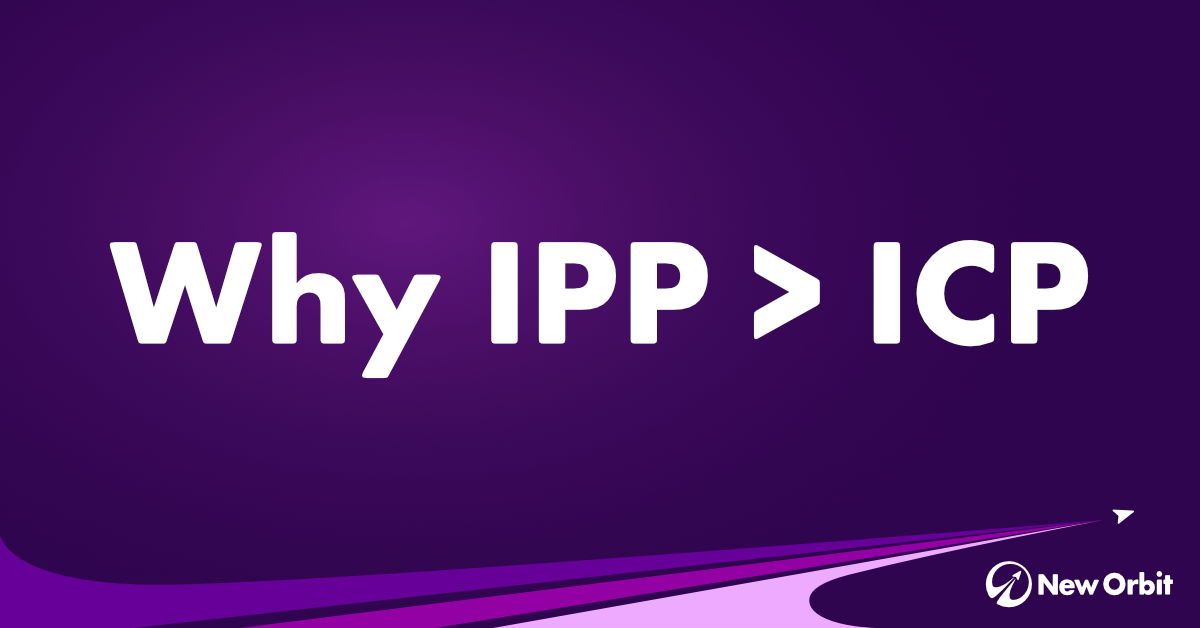Why IPP is better than ICP
Creating an IPP, an Ideal Pain Profile, is better than an ICP

You may have heard of "ICP" or "Ideal Customer Profile". It's used by businesses to describe exactly who they are targeting. This is also often referred to as a "target customer" or "persona".
Creating an ICP is a good exercise, as it can help companies focus their marketing effots by identifying the person most likely to buy their product. But ICPs have one serious flaw: they only work for narrow products with narrow use cases.
For example, who is the ICP for an iPhone? How about for Instagram? A pizza? A toilet plunger?
It is really difficult to describe an ICP for these products, as they could potentially be purchased by a wide variety of people.
That's perhaps why ICPs are more often used by startups than by larger organizations, as startups are typically building a minimum viable product, which should be narrow by definition, and thus target a specific kind of person.
Companies selling complex enterprise products might have multiple stakeholders in a committee or approval chain who need to sign off, and each of those people might have the power to derail the sale. So who is the ICP in this scenario?
If you still want to use the ICP construct in this case, you end up having to write up multiple ICP descriptions, and tailor your marketing efforts to each ICP. But this approach reveals the second weakness in ICPs: How do you write copy on your website or in a brochure that might be read by multiple ICPs? How can you speak to all those ICPs, who might have different needs?
Due to these weaknesses in ICPs, it can be challenging and even harmful to start marketing efforts by defining an ICP. So what should organizations do instead?
I suggest the IPP, or "Ideal Pain Profile" as a precursor to the ICP.
What's an IPP?
An Ideal Pain Profile doesn't start with a person, it starts with a pain. What pain in the world are you trying to address? Every product or organization came into existence because someone, somewhere had a pain in their life.
Pains take many forms, some are clear and obvious, like a clogged toilet, while others are more subtle or psychological, like boredom.
It can be helpful to write a pain statement from the perspective of the customer you are trying to reach. This exercise can often reveal mismatches in your marketing copy, where you are talking about features or benefits that do not address any real world pain.
For example, you often see headlines on a company home page that says something to the effect of, "We create the best products and provide the best customer service." Is this headline addressing any actual pain?
Rewritten from the customer perspective, no one is saying, "My life would be so much better if I could find a company with the best products and customer service." Can you see how these "we're the best at what we do" statements do not address any actual customer pain? They sound good but are too vague. The bridge between the customer pain and what the company offers has not been built.
The more specific you can get about what the customer pain is, the better. Let's look at our examples from above:
iPhone: I need a way to stay in touch with family, friends, and business associates, and efficiently get the information I need to live my life.
Instagram: I'm bored and need a low effort but entertaining way to pass the time.
Pizza: I'm hungry and need to find something to eat that's tasty, won't take too long, and is not too expensive.
Plunger: My toilet is clogged and I can't use it until it's unclogged.
If you start with these pains, you can now create marketing messages that directly address those pains.
And once you've done that, the next step will be to define your ICPs if appropriate for your product and market. Who has these pains? Where can they be found online? What is the most efficient channel to reach them?
The extra bonus you get from starting with an IPP is it gives you a huge head start in finding product-market fit. When you start with your product or ICP, there is still a high probability you will build a product that no one wants. 90% of startups fail, which demonstrates that entrepreneurs often build things that do not address any actual pain. You can imagine that an ICP would want your product, but if there is no pain attached to that ICP, you will struggle to find product-market fit.
What about you? What real world pain does your product address? Spend some time thinking about your IPP before thinking about your ICP, and you'll have a better chance of building something people want to buy.
Until next time,
Dave
